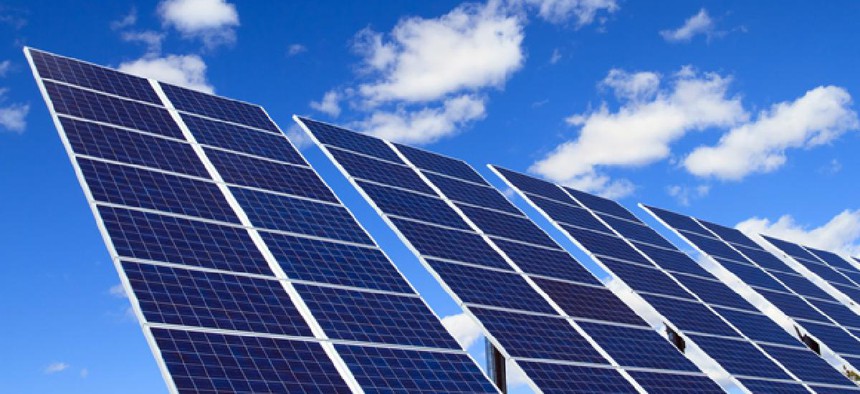
topseller/Shutterstock.com
Interior, Energy finalize strategy for solar power production on public lands
Plan identifies suitable land, speeds permitting and maps transmission lines for major projects.
The Energy and Interior departments this week announced what they called a major step for solar energy initiatives on public lands.
The final Programmatic Environmental Impact Statement for solar energy development will serve as a roadmap for large-scale projects, laying out existing and planned transmission lines and allowing for faster permitting, according to an Interior press release.
The PEIS outlines the government’s strategy for developing 17 solar energy zones on public lands in Arizona, California, Colorado, Nevada, New Mexico and Utah. Solar energy zones are areas where power companies could develop utility-scale solar energy plants on publically owned land. The departments expect the projects to use 284,918 acres of land currently belonging to the Bureau of Land Management. The chosen sites would generate enough energy to power approximately 1.7 million homes, according to the release. Additional “variance sites” lying outside the marked zones if developed could power another 7 million homes.
In a statement released on his department’s website, Interior Secretary Ken Salazar emphasized the project’s ability to quickly build up the country’s solar energy capacities.
“This blueprint for landscape-level planning is about facilitating faster, smarter utility-scale solar development on America’s public lands,” Salazar said. “This is a key milestone in building a sustainable foundation for utility-scale solar energy development and conservation on public lands over the next two decades.”
The solar energy zones would allow private industry to quickly access permits and scale up the amount of electricity generated from these areas.
In selecting the solar energy zones, the departments took into account several key factors, including access to transmission lines, abundant solar resources and low conflict with the neighboring ecosystems. Additionally, the report indicated it looked into concerns of environmentalists, who posted comments on a draft of the PEIS.
Energy Secretary Steven Chu said the PEIS would help increase the consumption of renewable green energy.
“This new roadmap builds on that commitment by identifying public lands that are best-suited for solar energy projects, improving the permitting process, and creating incentives to deliver more renewable energy to American homes and businesses,” Chu said.
Solar energy has come under fierce criticism following the controversy surrounding loans given to energy company Solyndra. Even so, U.S. production of solar power has been increasing steadily during the past several years, as demand for cheaper and more renewable energy increases.
(Image via topseller/Shutterstock.com)







